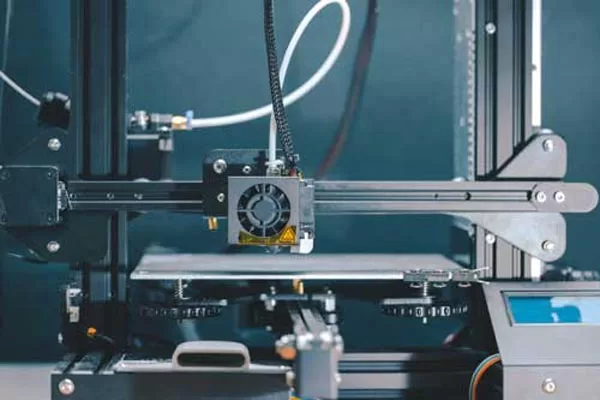Tooling is the heart of the production process. Tooling determines product quality, ensuring it meets manufacturing specifications. Rapid prototyping requires different types of tooling in each project phase for successful outcomes.
This post unpacks the critical role of production tooling in manufacturing.
Manufacturing Tooling Explained
Also known as “machine tooling,” manufacturing tooling involves the process of material design, cutting, forming, and shaping materials to produce prototype components. It’s a critical part of manufacturing processes involving prototype development in several industries, such as aerospace, medical products, and automotive parts.
Without manufacturing tooling, the prototyping process isn’t possible, resulting in a slowdown of technological advancement. There are different types of tooling to suit component manufacturing, with the most common tooling types being the following.
- Cutting Tools and Screwdrivers
- Jigs and workpiece fixtures.
- Molds and dies.
- Gauges for taking accurate measurements.
The type of tooling used impacts product quality. If manufacturers don’t design and engineer tooling correctly, it creates suboptimal results and inadequate components. Tooling influences manufacturing outcomes, increasing production run speeds while reducing costs.
Machine tooling comes in two categories.
Soft Tooling
Suitable for low to mid-volume production runs. Aluminium is the most common material used in soft tooling production and rapid prototyping projects. However, manufacturers must swap this tooling out frequently due to loss of integrity in its shape and form. Soft tooling has the advantage of faster turnaround times for prototyping projects but also creates more waste than hard tooling applications.
Hard Tooling
This tooling features design and construction with durable metals like nickel alloys, steel, or titanium. The result is a highly durable tooling capable of withstanding multiple production cycles without deforming. It’s a great choice for high-volume production runs but requires more development lead time.
The 3 Phases of Manufacturing Tooling
There are three classification phases of manufacturing tooling used at each stage of development and production.
- Rapid prototyping tooling.
- Bridge tooling.
- Production tooling.
Let’s unpack each phase to understand how it slots into the production process.

Rapid prototyping
Rapid Prototype Tooling
Prototype tooling, otherwise known as “rapid” or “soft” tooling, encompasses the design, production, and testing of tools for function and form in preparation for production. During the rapid prototyping process, manufacturers make several adjustments to the design to improve surface finish and component performance in testing applications.
Common materials used in rapid prototyping tooling processes include soft steels and aluminium alloys to lower project costs since it’s easier to shape, resulting in faster project turnaround times. Some benefits of implementing prototype tooling in your projects include the following.
- Fast prototype production, with projects up and running in days or hours instead of months or weeks.
- Less investment into tooling, allowing for proper testing to inspect design tolerances, flaws, and other critical aspects of component design and production.
- High accuracy for prototype modeling.
Bridge Tooling
Manufacturers use bridge tooling at the end of the rapid prototyping phase and before scaled production starts. This tooling doesn’t feature the same robust qualities as production tooling. However, manufacturers can build this tooling fast without the requirement for heavy investment.
It’s common for manufacturers to implement bridge tooling when ramping up production volume. It serves as a gap fill while waiting for the arrival of the final production tooling. Bridge tooling offers a quick, cost-effective substitute for production tooling. It provides manufacturing partners with a conduit to test production processes and assess product design viability.
Production Tooling
The final phase is production tooling. After the manufacturer is satisfied with product function and quality, it’s time to move into production. Production tooling features designed for long-term efficacy and production consistency.
Production tooling features design and construction with durable materials to ensure optimal performance under mass production conditions. However, it requires a significant investment and has a much longer production lead time.
In Closing – What Factors Impact Tooling Costs?
Tooling costs vary, depending on the project requirements. There are several variables attributing to the investment required in this tooling. There’s a misconception in the market, assuming tooling is expensive to produce and a cost-prohibitive production process.
In reality, modern tooling engineering methods reduce tooling costs, with cold-forming and CNC machining costs coming down as the technology progresses and becomes more widespread across manufacturing processes.
Manufacturers must consider a range of factors when considering tooling costs. For instance, implementing tight tolerances in manufactured finished parts affects the optimal configuration of the production tooling, its mechanical strength, and the rigidity of the tooling.
These configurations are essential for workpiece repeatability, accuracy, and quality. It’s also necessary for the optimal strength of cutting tools, which must withstand the machining forces in high-volume production applications.
Some companies offer tooling services that manually implement this process, which is time-intensive, leading to higher tooling costs. Other manufacturing partners fast-track this process by implementing advanced engineering and design software tools, lowering costs.
